The Chain Bridge is one of Budapest’s most famous landmarks. The magnificent suspension bridge was built in the nineteenth century across the river Danube to connect Pest with Buda, at the time still separate cities.
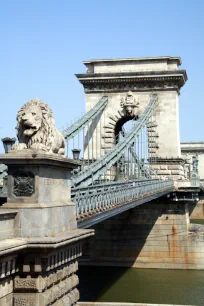
The Chain Bridge was the first permanent bridge in Budapest; the nearest bridge was in Vienna, and during wintertime the only way to cross the Danube was by taking a ferry. A temporary bridge was only available in the summer: it had to be disassembled each year to protect it against drift ice.
Count Széchenyi
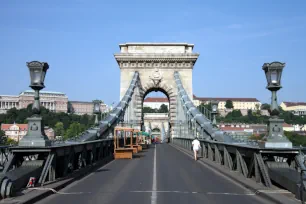
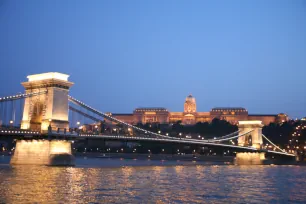
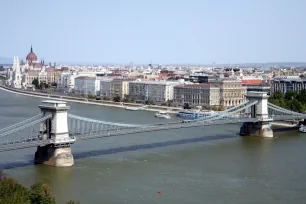
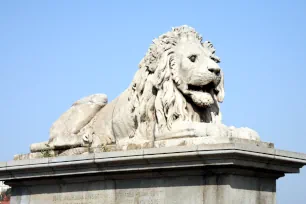
The Chain Bridge, officially known as the Széchenyi lánchíd, is named after count István Széchenyi, the driving force behind the construction of the bridge. After the count missed his father’s funeral when the ferry service across the Danube was halted due to bad weather, Széchenyi, a prominent statesman, resolved to build a permanent bridge across the Danube.
Construction
In 1836 Széchenyi asked William Tierney Clark, an English civil engineer, to design a bridge. Clark had the right experience, having already designed two suspension bridges over the Thames: the Hammersmith Bridge in London and the Marlow Bridge. The latter is a similar, albeit smaller version of the bridge William Clark would design for Budapest. Construction of the Chain Bridge started in 1842 under the supervision of the Scottish engineer Adam Clark (who was not related to William Clark).
The Bridge
The 375-meter-long and 16-meter-wide (1230 x 52 feet) bridge opened on November 20, 1849. At the time the suspension bridge was the longest in Europe and a marvel of engineering with just two towers supporting the spans with giant iron chains. The chains gave the bridge its name, lánchid, Hungarian for chain bridge.
The beautiful bridge towers are decorated with the Hungarian coat of arms. Imposing stone lions, the work of sculptor János Marschalkó, guard the bridge on either side. According to legend, the sculptor threw himself in the river when, during the bridge’s opening ceremony, a spectator proclaimed that the lions had no tongues. In reality, the lions do have tongues (they’re just not easily visible) and the sculptor lived on for several more decades.
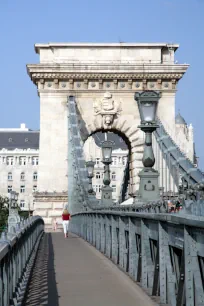
Significance
The bridge ignited the economic revival of Hungary that would lead to Budapest’s golden century, and it was one of the factors that made the provincial towns of Pest and Buda evolve into a fast-growing metropolis. The bridge is also a symbol of independence and was the site of demonstrations during the turbulent time of the fall of the Iron Curtain in 1989, when people demonstrated on the bridge.
Reconstruction
The Chain Bridge survived an attempt by the Austrians to destroy it in 1848, during the War of Independence. In 1945 however, near the end of World War II, the bridge was blown up by the Germans in an attempt to halt the progress of the Red Army. The bridge was one of the first structures to be rebuilt after the war, and it reopened in 1949. The current bridge is an exact copy of the original.

